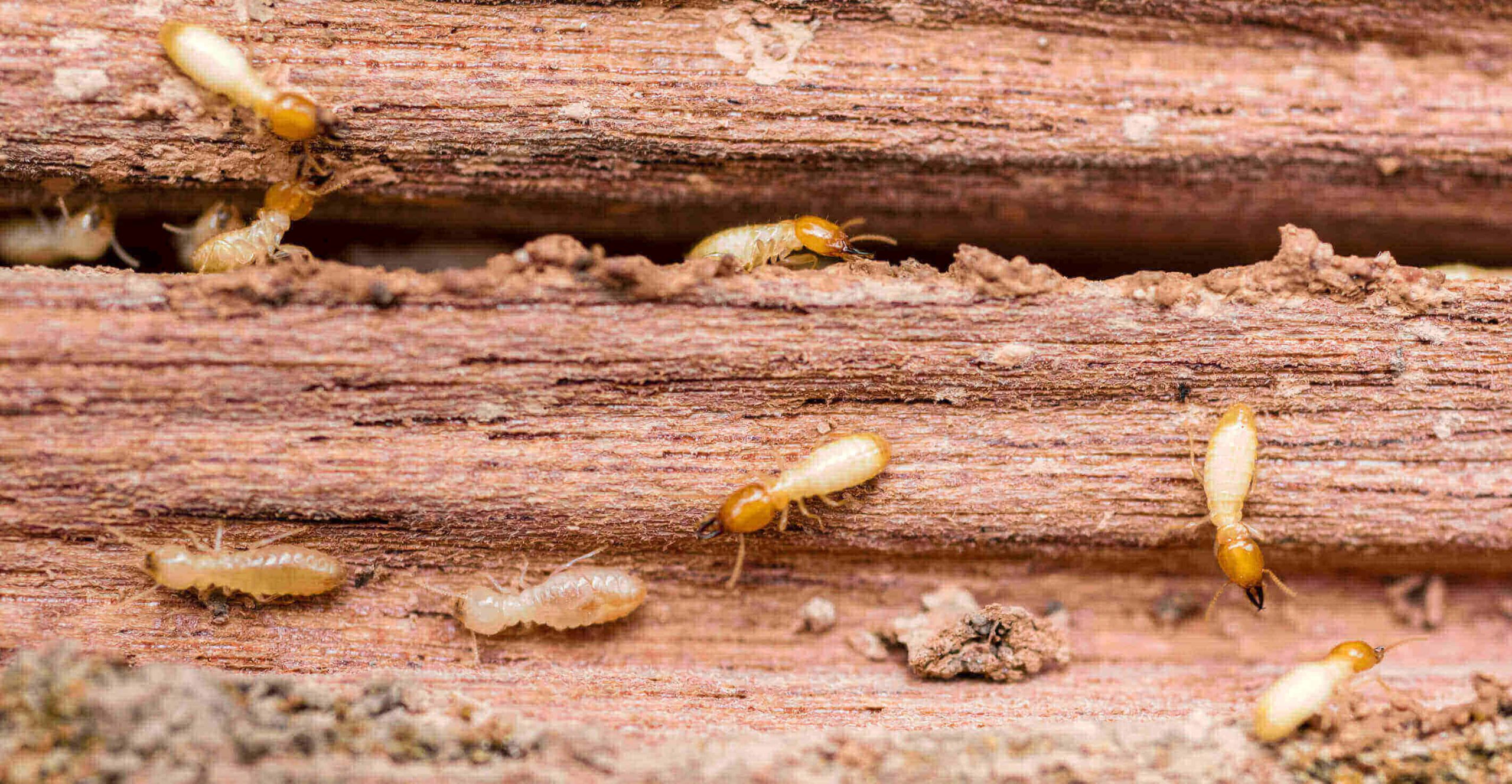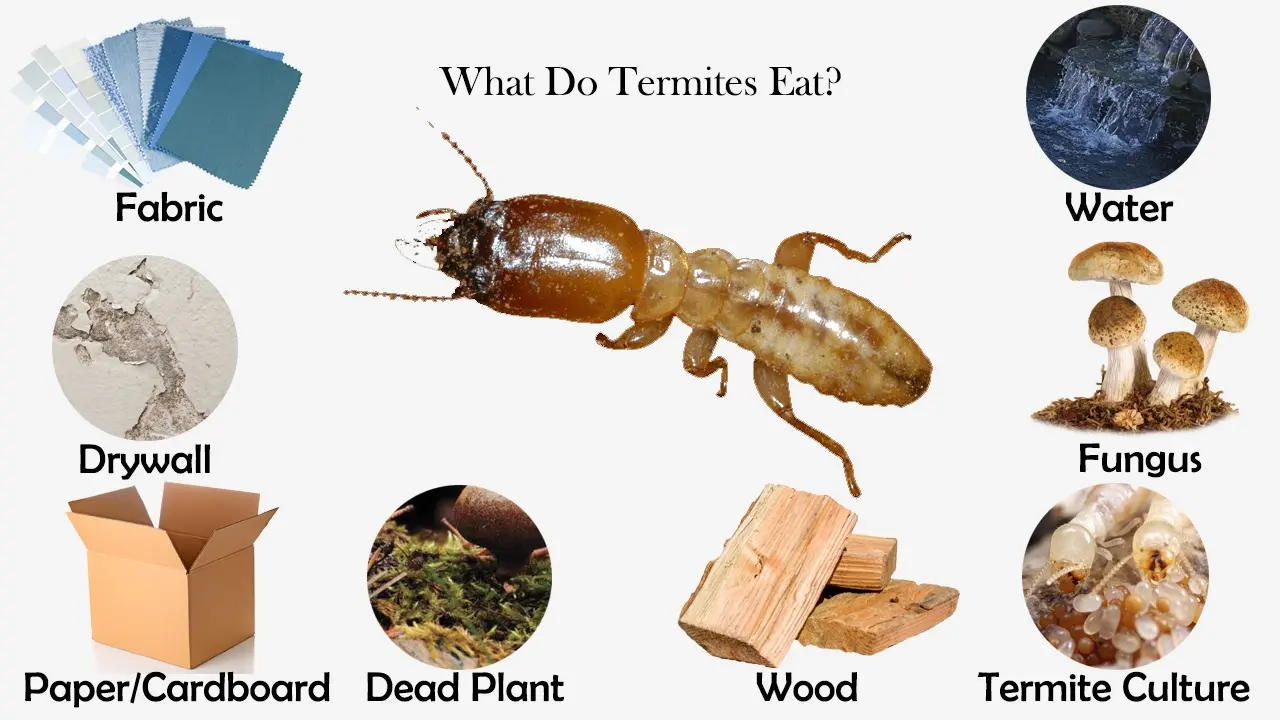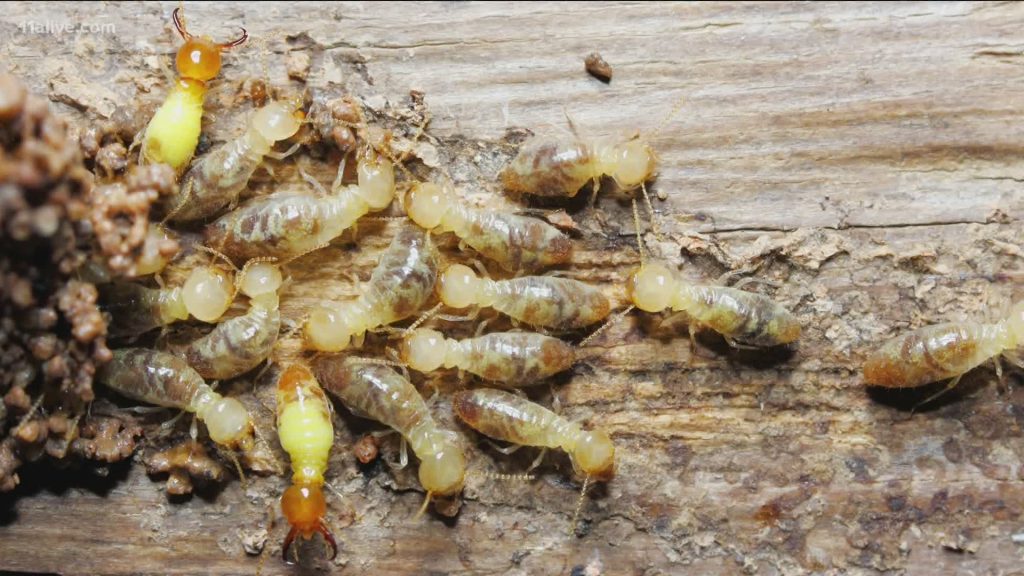Termites are fascinating wood-destroying insects that have captivated the interest of scientists and homeowners alike. This article will explore the diet of termites, uncovering the types of food they eat and how it affects the structures they infest. By understanding what termites eat, we can gain deeper insight into the amazing adaptations that make them so successful in nature.
Types of Termites

Termites are divided into three main categories: dampwood, drywood, and subterranean. Each type of termite has a different diet and habitat.
Diet of Different Types of Termites

Dampwood termites feed primarily on wood that is already moist or decaying, while drywood termites feed on dry wood. Subterranean termites feed on both wood and plant matter.
Do Termites Only Eat Wood?
No, termites do not only eat wood. They also feed on dead plant material, such as leaves, grass, and other vegetation.
What Else Do Termites Eat Besides Wood?
In addition to wood and plant matter, termites also feed on paper, cardboard, insulation, and other materials that contain cellulose. They can also eat non-cellulose materials such as glue and plastic.
Impact of Termites on Wood

Termites are wood-eating insects that can cause severe damage to wooden structures. The damage is often not visible until it is too late, making early detection and treatment essential to preventing costly damage. In the United States, termites cause an estimated $5 billion in property damage each year.
Termites feed on wood, paper, and other cellulose-based materials, including insulation and drywall. They can be found in nearly every region of the United States, but are particularly prevalent in areas where there is a high moisture content in the soil. The most common type of termite is the subterranean termite, which lives in underground colonies and is most destructive to wooden structures.
Table:
| Type of Termites | Impact on Wood |
|---|---|
| Subterranean Termites | Most destructive to wooden structures |
| Drywood Termites | Can cause extensive damage to wood |
| Formosan Termites | Can cause major structural damage to wood |
Drywood termites can also cause extensive damage to wood. They do not require contact with soil, but instead build nests within wood. Formosan termites are also a major pest of wood and can cause major structural damage.
Termites can cause serious damage to wooden structures, and must be controlled to prevent costly repairs. Early detection is key to preventing termite damage, and homeowners should be aware of the signs of termite infestation. These include mud tubes, wings near windows and doors, and damaged wood. If termites are suspected, it is best to contact a professional pest control service.
Effects of Termites on Other Food Sources
- Termites can cause extensive damage to crops and other food sources.
- They feed on dead plant material, wood, and paper, as well as living plants.
- Termites can cause significant losses in crop yields, resulting in a decrease in food supply.
- They can also significantly reduce the quality of stored grain and other food sources.
- Termites can also spread diseases, leading to further food losses.
- In some cases, termites can even cause structural damage to buildings, leading to increased maintenance costs.
Prevention and Control of Termites
Termites cause extensive damage to wood, furniture, and other materials in and around your home. To prevent and control termite infestation, regular inspection is important. Inspect all wood materials in your home for signs of termite activity such as tunnels, dirt, or mud tubes. Make sure to check all areas where wood is in contact with soil such as decks, porches, and foundations.
It is important to remove any sources of moisture and food that may attract termites. Wood piles, debris, and other organic materials should be removed from the home. Make sure to seal any cracks or crevices in the walls and foundation of your home.
Chemical treatments are an effective way to prevent and control termite infestations. Chemical barriers can be applied to the soil surrounding the home to create a barrier that prevents termites from entering. Baiting systems, which attract and kill termites, can also be used.
It is also important to contact a professional pest control company if you suspect a termite infestation. Professional pest control companies are experienced in the prevention and control of termites and can provide effective solutions to your termite problem.
Frequently Asked Questions
Do all termites eat wood?
No, not all termites eat wood. Termites are divided into two categories: subterranean termites and drywood termites. Subterranean termites feed on cellulose-based materials, such as wood and other plant matter. Drywood termites, on the other hand, only feed on wood and don’t require soil contact or moisture. Therefore, not all termites eat wood.
What do termites eat besides wood?
Termites are omnivores and typically feed on a variety of materials, including plants, fungi, and other insects. Termites also feed on dead plant material such as leaves, grass, and twigs. In addition to wood, they also feed on paper, insulation, and plaster. They also feed on fabrics such as cotton, linen, and wool, as well as materials like foam rubber and wallboard. Termites can also feed on animal feces, animal bones, and even animal fur.
Do termites only eat wood?
No, termites are not limited to consuming wood. They can also feed on paper, cardboard, insulation, and other materials that contain cellulose. While the majority of their diet consists of wood, termites may also seek out other sources of cellulose when wood is scarce.
What do Termites do to Wood?
Termites feed on cellulose-based organic materials, including wood and wood products. They eat through wood, weakening and eventually destroying wooden structures. Termites will often nest inside of the wood they are eating, and the nest can be difficult to detect. As they feed on wood, they can cause extensive damage to wooden structures, such as homes, furniture, and other wooden products.
What do Termites Eat?
Termites primarily feed on cellulose-based materials, including wood, paper, cardboard, and other plant-based materials. In nature, they are important decomposers that help break down dead trees and other plant matter into soil. In homes, termites can cause significant damage to wood, furniture, and other cellulose-based materials.
Conclusion
Termites are voracious feeders, capable of consuming and damaging wood and other cellulose-based materials. Through the consumption of wood, termites are able to obtain the nutrition they need to survive. While termites can consume different types of wood, they prefer softwoods and plywood. The diet of termites is supplemented by a variety of other food sources, such as fungi and other insects. To prevent termites from damaging your home, regular inspections and preventive treatments should be conducted.







